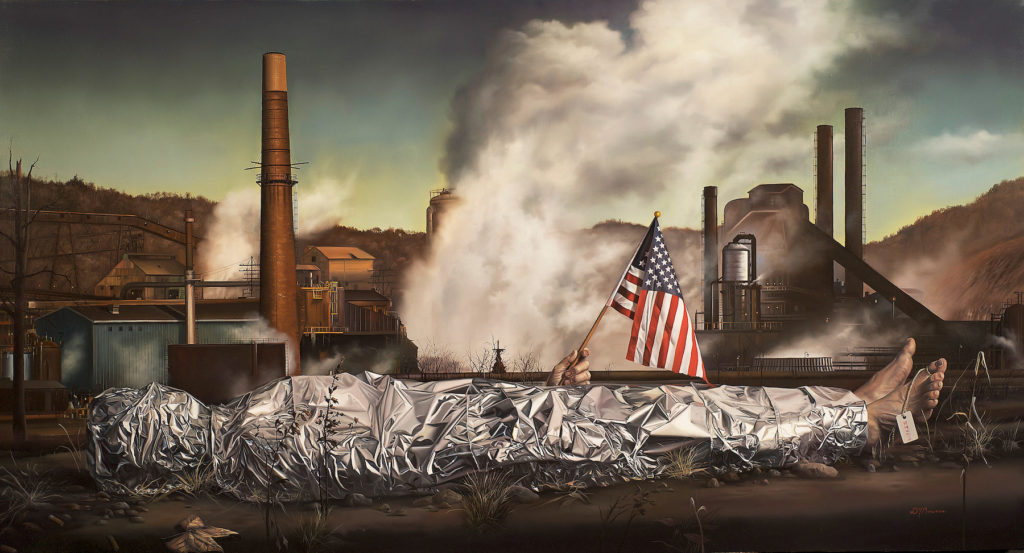Narrative Art > Learning more about the creative process of David Bowers, one could get the sense he’s simply a conduit of pure inspiration. Focusing on technique, his pictures take on a life of their own, which frequently results in outstandingly beautiful works with unconventional narratives.

As one might expect from the tantalizing hints above, prolific artist David Bowers begins his creative process with a scene, subject, or idea that captures his attention. Using pencil or brown ink — and sometimes completing a watercolor study — Bowers records the source of inspiration. Once born, the paintings follow their own individual journeys, and it seems the end product is quite unpredictable.


“People always want to know what I was thinking when I create one of my more unusual paintings,” Bowers says. “My answer to them is simple: I just really wanted to paint that girl wrapped in plastic, holding a dead rat. The story sometimes just happens during the painting process. Sometimes the hidden narrative or true meaning is in the title itself. I am often inspired by an image that I see and my painting materializes from that image. It will often morph into so much more.”

This process can be challenging and frustrating to follow, and Mrs. Bowers deserves some credit. “Halfway through a painting, I’m always in flux as to where I want to go with it and often complain to my wife that I don’t like the painting, it’s not working out, and I want to destroy it,” the artist writes. “I wouldn’t be nearly as prolific if it weren’t for her. She tells me, ‘You always say that at this stage of the painting and it will work out in the end. It’s a beautiful painting and you are not going to destroy it!’”
Thank goodness, because she’s absolutely right; Bowers’ paintings are outstanding examples of contemporary realism, and his narratives are fresh, original, and captivating.


“Tears from Heaven” is a pertinent example. Bowers says, “This work was inspired by a wall in the Seattle Art Museum. The wall had a variety of busts and heads from antiquity in different degrees of decay attached to the wall. I loved the texture of the heads and how the shadows cascaded down against the wall. I love music and am a beginner guitar player, so I thought how interesting it would be to do something similar with rock and pop stars that died tragically and before their time.”


Ultimately, Bowers seeks to perfect his technique, endeavoring to make each painting better than the last. With this in mind, it shouldn’t surprise that Bowers was inspired early in his career by the Dutch masters — their luxurious surfaces, captivating narratives, and subtle sense of humor. Today, only the desire to have a near-perfect finish on the surfaces of his work remains.
“Now I try to paint without thinking of any past influences and create my own unique vision,” he says. “I spend a lot of time digging minute dust particles from my surfaces. I also sand the paintings carefully between layers with pumice stone powder to help with the removal of dust particles. My wife often says that I look like a mad scientist when I am creating a panel.”


Modern-day Victor Frankenstein or not, Bowers indeed uses paint to bring his unique visions to the world, and the life they take on continues to draw collectors and connoisseurs. “My favorite quote was from Billy Joel. He said, ‘In a world filled with mediocrity, just being competent makes you seem extraordinary.’ I will never settle for mediocrity. My drive is to make the next painting better than the last!”
Additional Narrative Art Works by David Bower:



To learn more, visit David Bowers.
> Sign up to receive Fine Art Today, our free weekly e-newsletter








